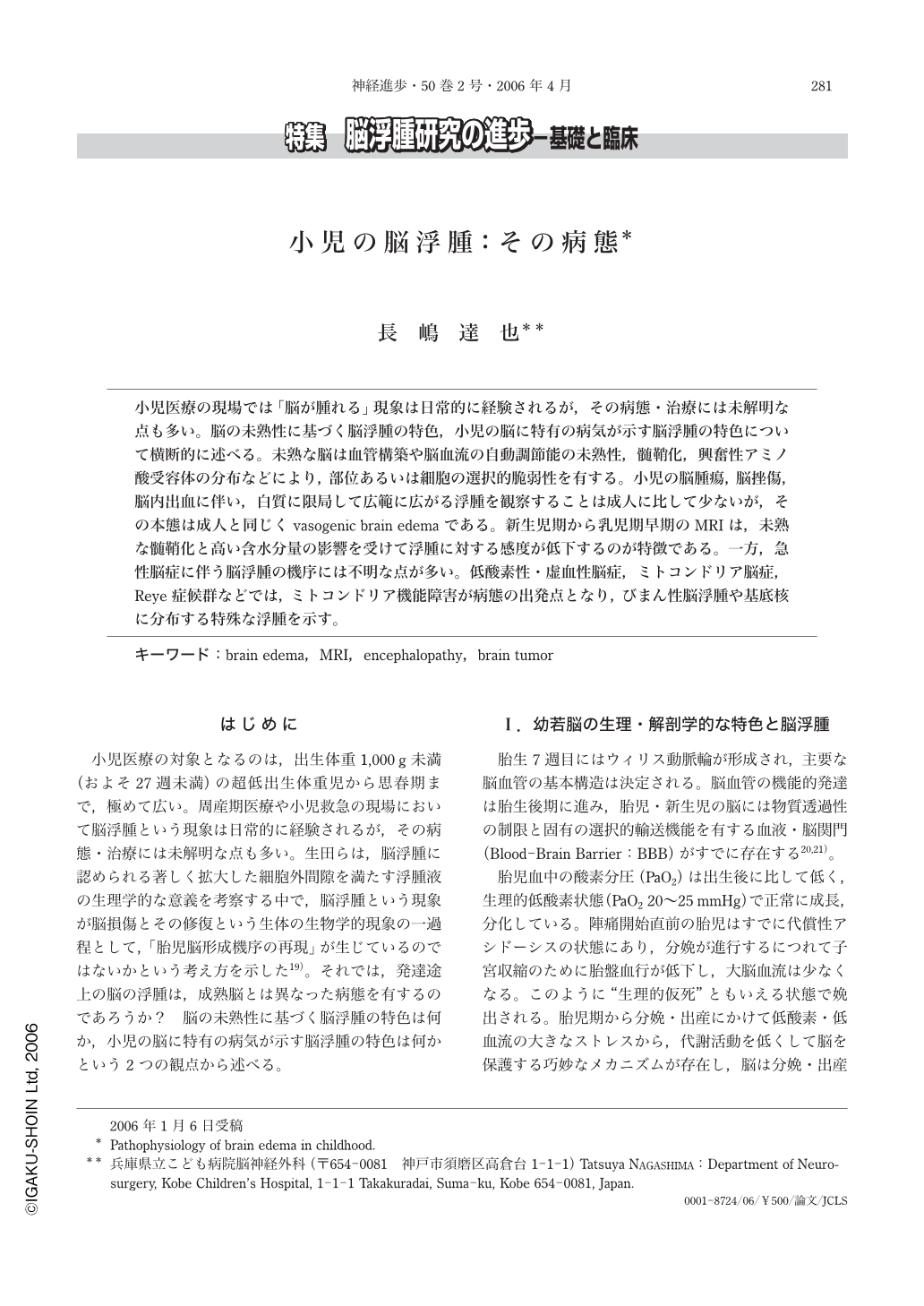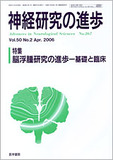Japanese
English
- 有料閲覧
- Abstract 文献概要
- 1ページ目 Look Inside
- 参考文献 Reference
小児医療の現場では「脳が腫れる」現象は日常的に経験されるが,その病態・治療には未解明な点も多い。脳の未熟性に基づく脳浮腫の特色,小児の脳に特有の病気が示す脳浮腫の特色について横断的に述べる。未熟な脳は血管構築や脳血流の自動調節能の未熟性,髄鞘化,興奮性アミノ酸受容体の分布などにより,部位あるいは細胞の選択的脆弱性を有する。小児の脳腫瘍,脳挫傷,脳内出血に伴い,白質に限局して広範に広がる浮腫を観察することは成人に比して少ないが,その本態は成人と同じくvasogenic brain edemaである。新生児期から乳児期早期のMRIは,未熟な髄鞘化と高い含水分量の影響を受けて浮腫に対する感度が低下するのが特徴である。一方,急性脳症に伴う脳浮腫の機序には不明な点が多い。低酸素性・虚血性脳症,ミトコンドリア脳症,Reye症候群などでは,ミトコンドリア機能障害が病態の出発点となり,びまん性脳浮腫や基底核に分布する特殊な浮腫を示す。
Although brain edema is a popular pathological phenomenon in pediatric neurological diseases, its pathophysiology is not fully understood. This review describes characteristics of brain edema based on immaturity of the brain and pathophysiology of brain edema associated with specific diseases in pediatric population.
Immature brain has spatial or cell specific vulnerability caused by immature autoregulation of cerebral blood flow, immature myelination, and distribution of excitatory amino acid receptors. A prominent feature of both the preterm and the term neonatal brain is the high water content and the unmyelinated white matter that causes prolongation of T1, T2 on MRI. MRI of the neonatal brain shows the inverse of signal intensities of gray and white matter present in the fully myelinated brains in adult. Therefore, brain edema is especially difficult to recognize in the neonatal white matter.
Brain edema associated with brain tumors, head trauma and intracerebral hemorrhage in pediatric population is vasogenic and basically not different from that of adult. The perifocal brain edema in the white matter of immature brains seems to extend wider than that in adult. This indicates higher fluid conductivity of immature brain due to wide extracellular space.
Brain edema is a prominent feature of acute encephalopathy and can further compromise cerebral blood flow and metabolism. Energy failure set into motion a cascade of events that lead to necrosis or apoptosis. Pathophysiology of brain edema associated with acute encephalopathy is less understood. Hypoxic ischemic encephalopathy, MERAS, Leigh syndrome, Reye syndrome shows marked brain edema. In these conditions, mitochondrial dysfunction plays an important role in generation of brain edema. Chemical mediators, inflammatory cytokines, excitatory amino acids and apoptosis are involved in the cascade of events.
In conclusion, brain edema in the developing brain shows age specific features in neuroimaging and has different pathophysiology.

Copyright © 2006, Igaku-Shoin Ltd. All rights reserved.


